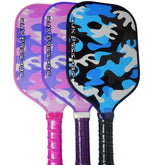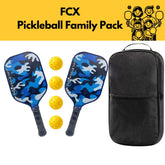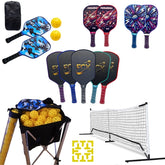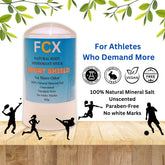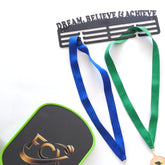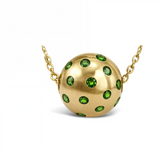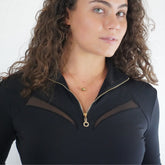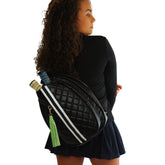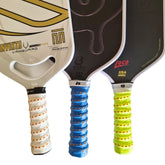The Science Behind Pickleball Footwear: What Shoes To Wear For Pickleball?
The Science Behind Pickleball Footwear
Pickleball demands quick starts, stops and lateral moves, putting strain on the feet, ankles and knees. Studies of paddle sports note that sudden direction changes and lateral stress often lead to ankle sprains and knee injuries. In fact, one review found that 22% of pickleball lower-extremity injuries are ankle sprains, and over half occur during abrupt pivots. Proper court footwear can greatly reduce these risks by providing support, shock-absorption and grip suited to pickleball's multidirectional demands.
Experienced players and sports medicine experts emphasize that running shoes are not enough – pickleball requires court shoes engineered for side-to-side play.
Key Features of Pickleball Shoes
- Lateral Support & Stability: Look for shoes with reinforced sidewalls, a firm heel counter, and a mid-foot shank. These features keep the foot locked in place during rapid cuts and lunges. Footwear biomechanics studies show that improved lateral stiffness and torsional resistance in the sole greatly reduce ankle inversion in cutting movements. In short, a low-to-the-ground, wide-stance court shoe with good side-to-side support helps prevent ankle rolls.
- Cushioning & Shock Absorption: A well-cushioned midsole (using EVA foam, gel inserts or proprietary compounds) attenuates impact forces on the feet and knees. Research on tennis footwear – a close analogue to pickleball shoes – finds that heel and forefoot cushioning and overall foot stability are the "common denominator" between comfort and injury reduction. Clinicians similarly note that high-cushion shoes absorb landing impact during running and jumping, protecting knees and plantar tissue. Adequate cushioning can especially help middle-age players avoid chronic knee pain by smoothing ground reaction forces.
- Traction & Outsole Durability: Pickleball shoes use non-marking rubber soles with tread patterns suited to court surfaces. Indoor court shoes have softer rubber and mesh uppers for grip on gym floors, while outdoor shoes use harder rubber and tougher soles for asphalt or concrete. Proper traction lets you stop and pivot securely, reducing slips that could twist knees or ankles. Durable outsoles resist abrasion from lateral shuffling and toe-dragging.
- Secure Fit & Comfort: A snug, glove-like fit prevents the foot from sliding inside the shoe. Look for a supportive ankle collar and a locked-in heel counter to minimize internal movement. A wide toe box is also beneficial: it allows the toes to splay under load, reducing stress and avoiding blisters or "hammer toe" issues. Moisture-wicking, breathable uppers help manage sweat and reduce hotspots.
- Arch & Heel Support: Strong medial (arch) support maintains foot alignment and evenly distributes weight. Shoes with a well-contoured arch help prevent overpronation and can reduce knee valgus, which is especially important for older players. Deep heel padding (or an insert) cradles the heel to ease strain on the Achilles tendon and plantar fascia.
These technical features – lateral shanks, compression-quality materials, reinforced toe guards and responsive foams – make a true court shoe distinct from a running sneaker. In fact, sports podiatrists explicitly advise that "running shoes are meant for linear motion, not lateral motion," and players should choose court-specific shoes with side-to-side stability. Laboratory analysis confirms that modifying sole torsion and upper design can significantly improve lateral stability during cutting moves, directly reducing ankle-sprain risk.
Singles vs. Doubles: Play Style and Footwear
Pickleball singles and doubles put slightly different demands on footwear. Singles involves covering the entire court, so sustained footwork and longer rallies are common. Players may therefore favor extra cushioning and shock absorption to handle more running and jumping. In doubles, rallies are often shorter and more volley-intensive at the net, so ultra-secure lateral grip and quick response can be paramount.
In practice, the same key shoe traits apply: all players need stability and cushioning. A singles specialist might prioritize a shoe with plush midsoles for endurance, while a doubles player may emphasize a low, stable platform for explosive side steps. Regardless, proper arch support, a locked heel and good outsole traction are essential in either format.
Preventing Foot and Knee Aches
The right shoes can be a frontline defense against common aches in pickleballers. By absorbing shock and limiting harmful foot motion, they help protect knees, shins and joints from wear. For example, a shoe with ample heel cushioning will decrease the abrupt loading of the knee joint during stopping and starting. Likewise, strong lateral support prevents the kind of accidental twisting that causes ligament strains. Inertia from quick lunges can drive too much force into the Achilles or plantar fascia, but a supportive shoe heel (and proper warm-ups) distribute that energy more safely.
In middle-aged adults especially, maintaining joint health is critical. Well-fitted court shoes can reduce cumulative stress: studies note that increased shoe cushioning correlates with lower peak ground reaction forces at the knee. Also, solid traction prevents injurious slips (which can strain ACL or meniscus). One sports medicine review emphasizes that investing in "court-specific footwear with proper side-to-side stability, heel cushioning, and arch support" is key to avoiding lower-limb injuries. In practice, pairing such shoes with routine ankle and foot strengthening (balance exercises, calf raises) and proper warm-ups dramatically cuts injury risk.
The Supporting Role of Performance Socks
In addition to shoes, quality socks can enhance foot comfort and injury prevention. Technical pickleball socks like the FCX "BübblPro" line include features such as multi-zone cushioning and compression that complement the shoe. For instance, FCX BubblPro crew socks have strategic padding in the heel, sole and pressure points to "absorb impact without bulk, preventing hot spots". Their graduated compression design "reduces swelling and fatigue" and "improves circulation during long days," giving extra support to ankles and arches.
Such socks also wick moisture and limit friction, helping prevent blisters during extended play. In effect, a cushioned, snug sock works with your footwear to cushion each step and maintain foot health, especially for players logging many hours on court.
Conclusion
In summary, pickleball shoes should be treated as technical equipment built for the sport's unique stresses. Look for a true court shoe (not a running sneaker) with durable rubber soles, secure fit, supportive midsoles and protective reinforcements. Good traction prevents slips, while ample cushioning protects knees and feet from impact. These design elements address the most common pickleball injuries – ankle sprains, plantar fasciitis and knee pain – and help middle-aged players stay on court longer.
Combined with sensible warm-ups and body-strengthening routines, the right shoes (and even performance socks) can be your best ally in playing pickleball safely and at your peak.



